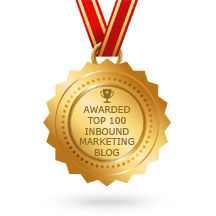
These days, there is an abundance of content online, and it can be overwhelming for even the most prolific internet users among us. This content saturation, is making it harder for organisations to stand out from their competitors. In fact, recent research from BuzzSumo revealed that as a topic becomes more popular, there is often a massive increase in published content around that topic, which inevitably saturates the topic area and makes it harder to have your voice heard.
As the modern buyer continues to become more savvy and independent, businesses can no longer get away with publishing content just for the sake of it. When publishing content in today’s digital era, it must align with the way people buy. Modern buyers are increasingly seeking a personalised experience. They want content that is aligned to their specific industry, their unique pain points and specialised needs. But how do you tap into the minds of your buyers to that degree of depth? Simple: you develop buyer personas, and then you create a content strategy based on your buyer personas and their buyer’s journey. Then you can be confident the content you’re producing is relevant and important to your specific buyers’ needs, and the way they buy. In this article, I’ll be discussing how you can align your content strategy and buyer personas with the buyer’s journey in order to reach your business goals and improve your results.
Content Marketing Strategies Are Dynamic
When was the last time you created a content strategy? Did you know, for a content strategy to be effective it needs to be updated on a regular basis? You may be surprised to learn that a content strategy created 3 years ago is today 50% less effective. So if you’ve never created a content strategy or your existing one is older than 3 years now is the time to update it. The thing is, content strategies are and should be dynamic, and it’s important you’re consistently reviewing and updating yours if you want the best results (which of course you do). The best place to start, when it comes to creating or updating your content strategy is by knowing your buyers. This means creating a buyer persona. Buyer personas are vital because if you don’t know who you’re targeting with your content you will never be able to effectively create content that will appeal to them and their needs. Here is a simple guide that will help you get started with creating your buyer personas.
The Importance of Providing Valuable Content
Modern buyers are smarter and more aware of their options than ever before. That’s why providing valuable content to buyers at each stage of the buyer’s journey is more important that every before.
When it comes to providing valuable content, your first step should always be to look at your buyer personas. What are the challenges your personas face? What questions do they have? What information do they need to help them make a buying decision? What do they need help with? Once you have this information, you can begin to align your content with how your customers buy.
Tailoring Your Content to the Buyer’s Journey
There are three stages to the buyer’s journey (awareness, consideration and decision). Creating content that’s shaped around the three stages of the buyer’s journey helps your content to really stand out because it is relevant to your buyers and what they’re looking for. When aligning your content strategy to the buyer’s journey, consider the ‘big-picture’ questions buyers might ask during each stage of the buyer’s journey. Let’s break it down to see what that might look like.
Content for the Awareness Stage
During the awareness stage, buyers aren’t ready to hear about specific solutions. At this stage, buyers are only starting to become aware that they have a problem. So, during this stage, it’s best to focus on the buyer’s pain points. You’ll want to offer them genuine help that answers their questions and educates them about the challenges they are facing.
Helpful content during the awareness stage includes how to articles in form of a blog post, e-books, infographic or webinar.
Content for the Consideration Stage
During the consideration stage, buyers now know exactly what their problem is and are beginning to look at the different solutions. It’s important to remember that during this stage, buyers still aren’t ready to hear your pitch, they’re not interested in brand specific information just solutions to their problem, challenge or pain point. At this stage focus on creating content that educates them on the pros and cons of different solutions. Buyers guides, comparison sheets and case studies are helpful at this stage of the buying process.
Content for the Decision Stage
The decision stage – the make or break point. Will the buyer choose you or your competitor? Well, this all comes down to your solution. During this stage, buyers want to know the specific details of how you can help solve their problem. This includes information about how your solution works, who else has used it and their thoughts on it. Helpful content during this stage should include customer testimonials, free trials, pricing comparison guides, product demos and any other type of content that’s really going to highlight to the buyer why they should choose your solution over your competitors.
In Conclusion
A good content strategy answers questions your buyers have. But a killer content strategy takes the buyer journey into account too. Ensuring there is plenty of content that addresses the information and questions your buyers have at each stage of the buying process. When done correctly, aligning your content strategy with your buyer personas and the buyer’s journey is one of the most effective ways you can help move your buyers through the sales funnel. Whether it’s a lead who’s just become aware of their problem or someone who’s ready to buy, you will have made sure they can trust you and your solution. 

